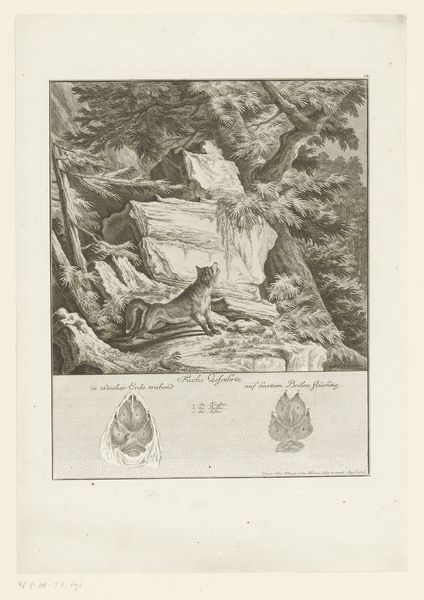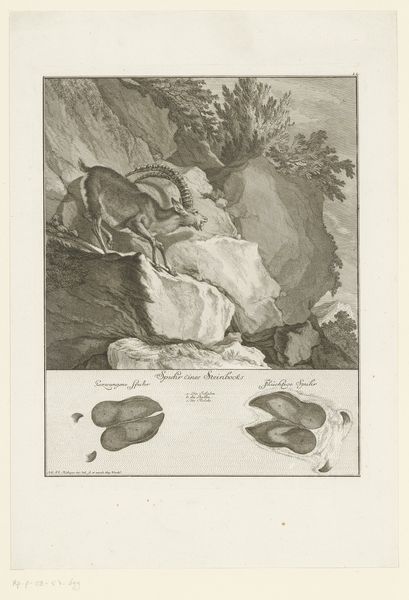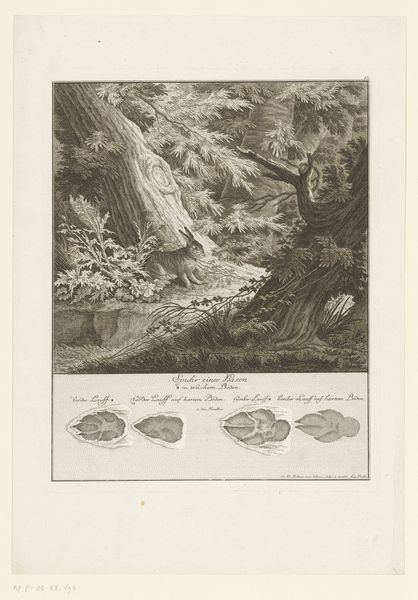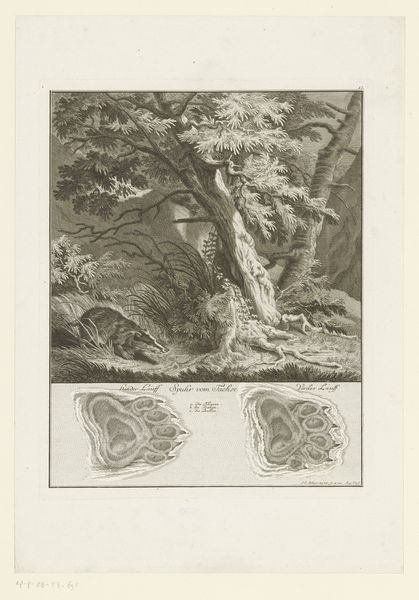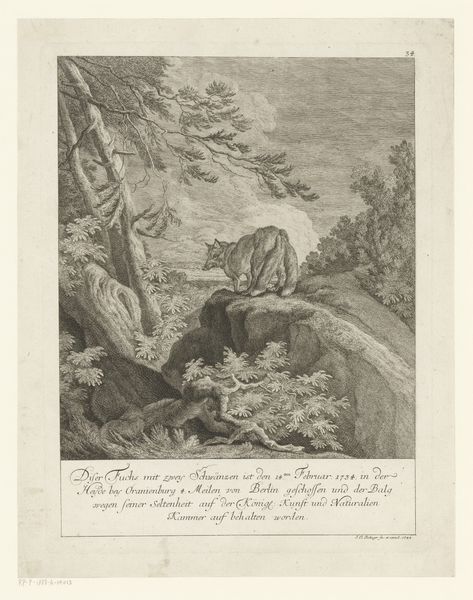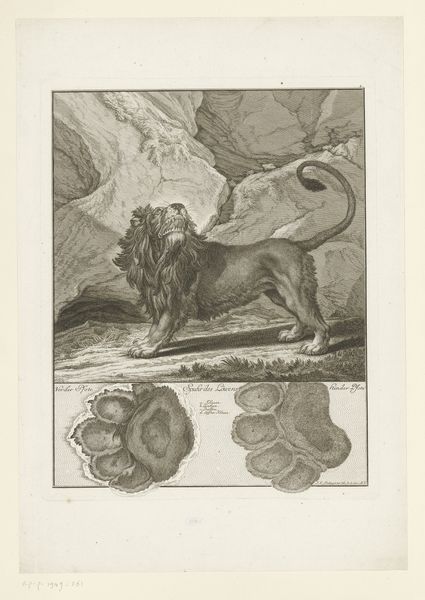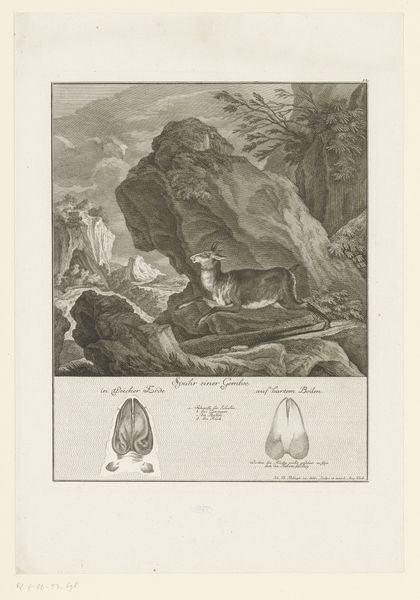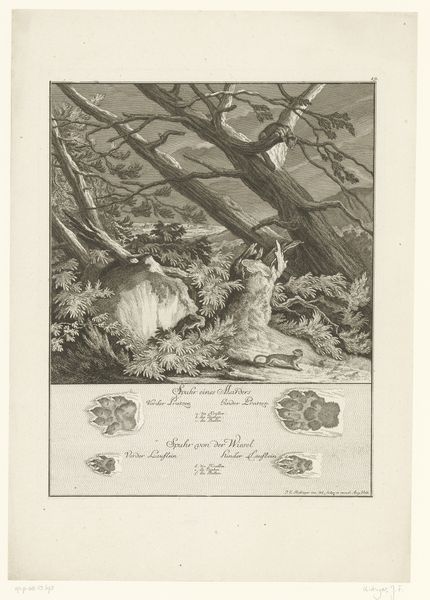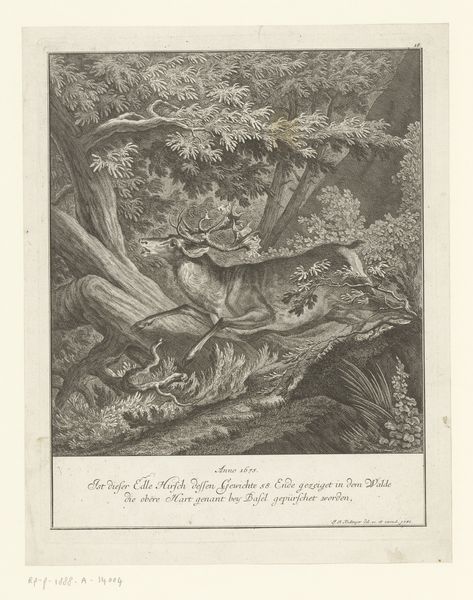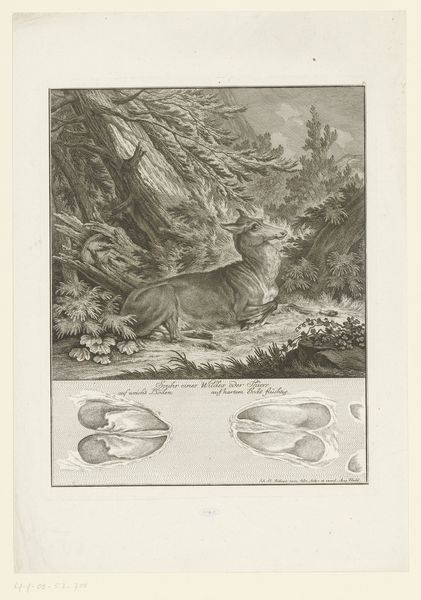
print, engraving
#
animal
# print
#
landscape
#
forest
#
pencil work
#
engraving
#
realism
Dimensions: height 374 mm, width 296 mm
Copyright: Rijks Museum: Open Domain
Johann Ridinger created this print of a lynx with etching and engraving. Here, the artist has not only depicted the animal in its natural habitat, but also has provided a guide to identifying its tracks in different conditions. This image speaks to the rise of scientific illustration in the 18th century. This was a time when European society was increasingly interested in classifying and understanding the natural world. Institutions like the Royal Society in London were at the forefront of promoting empirical observation and scientific study. Ridinger’s detailed rendering of the lynx and its tracks reflects this growing desire for accurate and systematic knowledge. The inclusion of the tracks is particularly interesting, as it suggests a practical application of this knowledge for hunters or naturalists. To truly appreciate this print, we can delve into the natural history writing of the period to see the various ways animals were classified and understood at this time. By examining Ridinger’s other prints, we can appreciate the changing relationship between humans and the natural world.
Comments
No comments
Be the first to comment and join the conversation on the ultimate creative platform.
